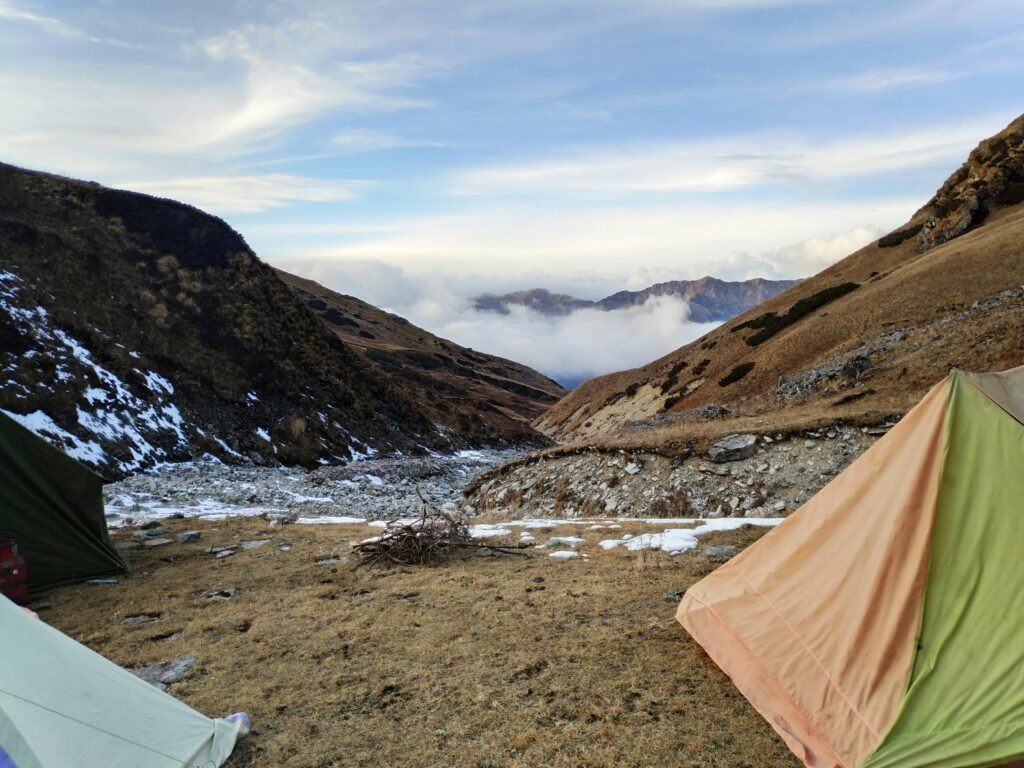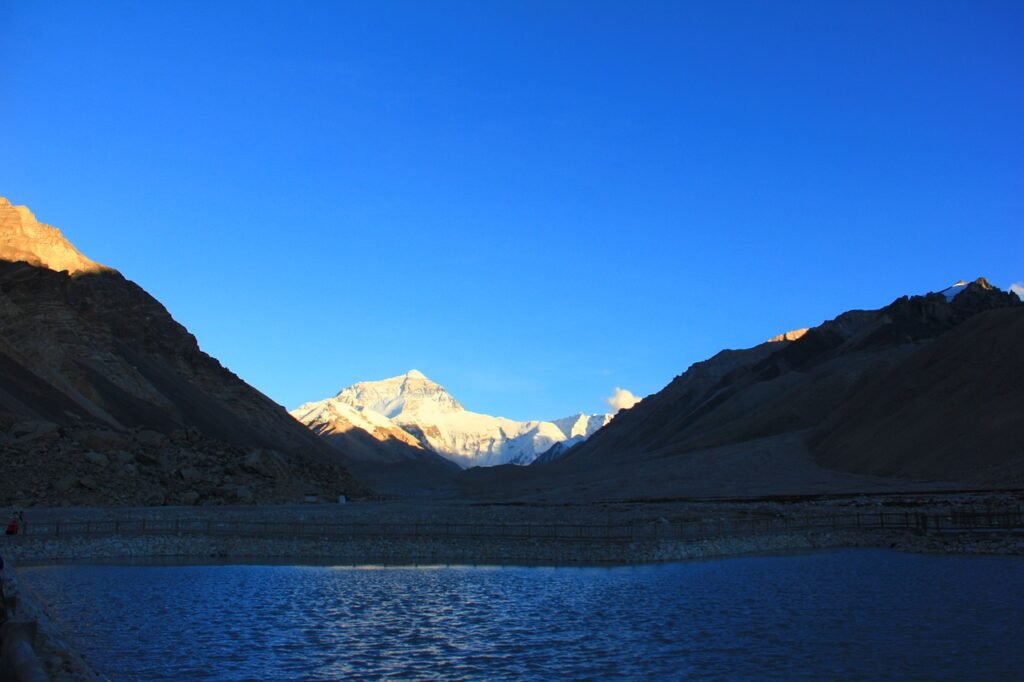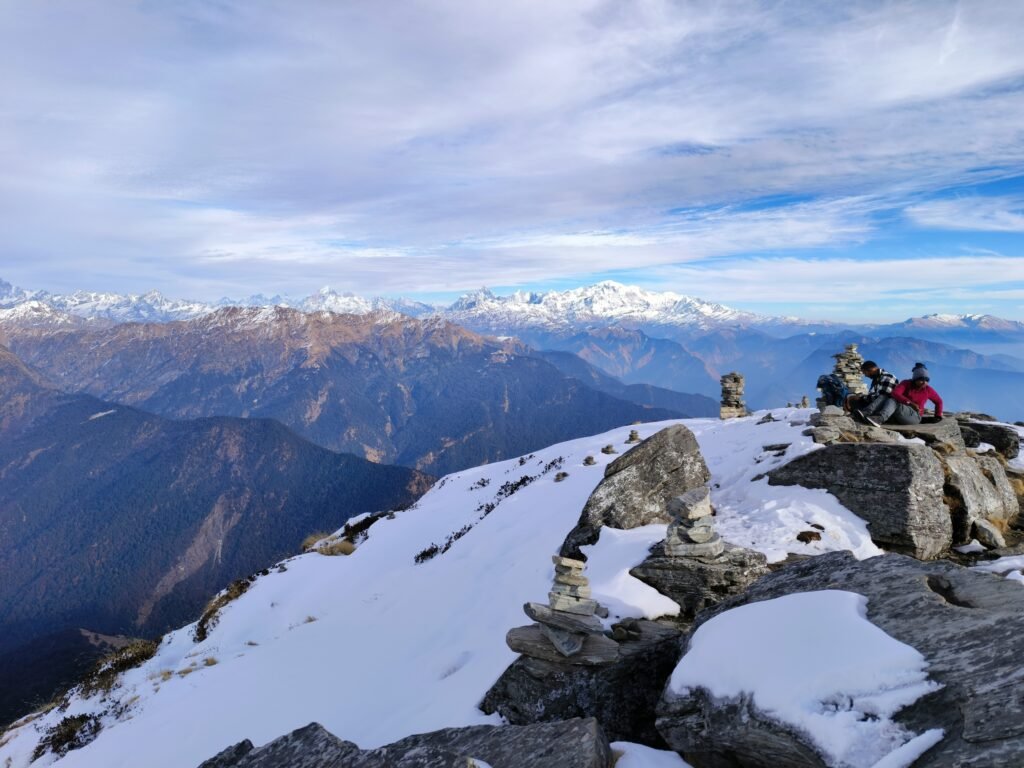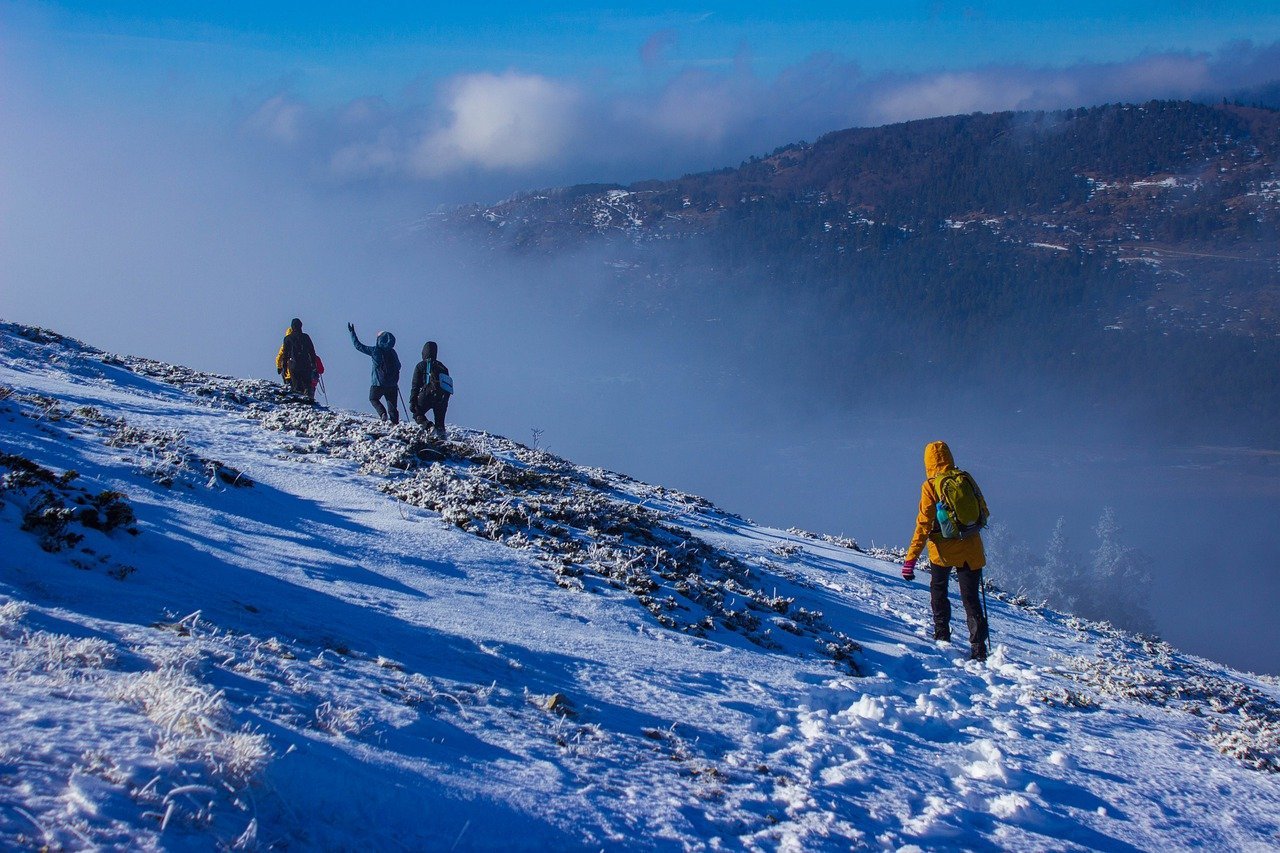The Geological Formation and Characteristics of Mount Everest
Mount Everest, often called the “Roof of the World,” stands as a symbol of Earth’s powerful geological forces. Over 60 million years ago, the collision of the Indian and Eurasian tectonic plates formed this mighty mountain. Even today, tectonic activity pushes Everest upwards, keeping it at its towering height of 8,848.86 meters (29,031.7 ft), making it the tallest peak on Earth.
Mount Everest’s features go beyond its height. Its rugged landscape includes the dangerous Khumbu Icefall and the steep Lhotse Face. The Khumbu Icefall, a glacier filled with deep crevasses and towering ice blocks, challenges climbers early in their ascent. It marks one of the most treacherous parts of the climb, testing every mountaineer’s skill.
The Lhotse Face, a steep, icy slope, adds another layer of difficulty. Rising sharply towards the summit, it forms part of the most popular climbing routes. It shows climbers the harsh reality of Everest’s ascent and the dangers that come with it.
Beyond its physical form, Everest supports a unique ecosystem. Its towering presence creates habitats for plants and animals specially adapted to extreme conditions. This ecological balance is shaped by the same geological forces that gave rise to the mountain.
In summary, Mount Everest is not just a towering peak; it is a testament to the dynamic relationship between Earth’s geological activity and its ecosystems. Its allure captivates both adventurers and scientists alike, who are drawn to explore and understand its majestic heights.
The Climbing History: Conquests and Tragedies



The exploration of Mount Everest has fascinated adventurers since the early 20th century. The first major expeditions began in the 1920s, with attempts from both the north and south sides. One of the most famous early attempts was the 1924 expedition by George Mallory and Andrew Irvine. Sadly, they disappeared before reaching the summit, leaving their fate a haunting mystery and a reminder of the dangers of high-altitude climbing.
The turning point came in 1953 when Sir Edmund Hillary and Tenzing Norgay reached the summit. Their successful climb inspired countless adventurers and positioned Everest as the ultimate challenge for climbers worldwide. It wasn’t just about their endurance; their ascent also reflected advancements in climbing gear and techniques.
Since then, equipment and strategies have improved significantly, allowing more climbers to attempt the summit. Yet, the allure of Mount Everest remains the same—a symbol of human determination and the ultimate test of endurance.
The Cultural Significance and Spirituality of Mount Everest





Mount Everest, called Sagarmatha in Nepali and Chomolungma in Tibetan, holds deep cultural significance for the Sherpa communities and the entire Himalayan region. It is not just the highest peak on Earth; it is a sacred symbol. For the Sherpas, Everest is seen as a protector of their land and culture, and its image is deeply woven into their religious practices. Many believe that the mountain is home to deities, and they perform rituals and ceremonies to honor it, reflecting the strong bond between the people and their natural environment.
This connection is evident in various local festivals and customs that celebrate the mountain’s importance. For the Sherpa community, Everest represents more than just physical grandeur—it stands for their aspirations and resilience. While international climbers often view Everest as a personal achievement, the Sherpas see it through a spiritual lens, adding layers of meaning that transcend the commercialized perspective of tourism.
However, the rise in tourism and climbing expeditions brings both benefits and challenges. On one hand, it boosts the local economy and provides new opportunities. On the other, it strains the environment and threatens traditional practices. Increased foot traffic has put pressure on local ecosystems, and rapid modernization risks diluting the sacred customs linked to the mountain.
Balancing these challenges while preserving the cultural and spiritual heritage of Mount Everest remains a crucial task for both the Sherpa community and the global visitors who flock to its heights.
Modern Challenges: Environmental Impact and Conservation Efforts




Mount Everest, often called the “Roof of the World,” draws adventurers from around the globe but also faces serious environmental challenges. The increase in climbers over recent decades has led to significant issues, especially with waste management and pollution. Thousands of climbers leave behind a large amount of waste, including human excrement and discarded climbing gear. In some areas, waste accumulation is alarming, impacting Everest’s pristine environment.
The problem goes beyond litter. Non-biodegradable materials, like discarded oxygen bottles and plastic, now pollute the mountain. These materials don’t break down, staying for decades and harming both the landscape and local wildlife. The ecological balance of the region is at risk, threatening the delicate ecosystem that surrounds Everest.
Organizations promoting sustainable tourism are pushing for responsible climbing practices to reduce the impact on Everest. Clean-up campaigns and stricter waste disposal regulations are being implemented to manage the growing problem. Education is crucial, as raising awareness about pollution helps climbers understand their responsibility to protect the mountain.
Local governments and trekking leaders are also working together to enforce eco-friendly practices. Their goal is to preserve Everest for future generations, ensuring that its beauty can be enjoyed without environmental damage. Protecting Mount Everest requires a collective effort from both climbers and authorities, emphasizing sustainable exploration.
In conclusion, safeguarding Mount Everest is essential for both its ecological balance and cultural significance. Immediate and ongoing action is needed to protect this iconic mountain and ensure it remains a natural wonder for years to come.






